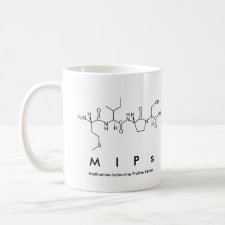
Authors: Bass JD, Katz A
Article Title: Bifunctional surface imprinting of silica: thermolytic synthesis and characterization of discrete thiol-amine functional group pairs.
Publication date: 2006
Journal: Chemistry of Materials
Volume: 18
Issue: (6)
Page numbers: 1611-1620.
DOI: 10.1021/cm052382j
Abstract: In this article we demonstrate the sub-nanometer patterning of mixed chemical functional groups consisting of thiol and primary amine functionality on the surface of silica and characterize the local organization of thiols and amines within these materials. Our approach has required the development of a synthetic method for the thermolytic imprinting of thiols based on a xanthate protection scheme, which enables bifunctional imprints containing carbamate and xanthate functionality to be condensed onto a silica surface and thermolytically deprotected in a single step. This imprinting process is demonstrated for the synthesis of bifunctional imprinted sites containing thiol-amine pairs and groups of two thiols and an amine per imprinted site, and is characterized using solid-state UV/Visible, 29Si CP/MAS NMR, and 13C CP/MAS NMR spectroscopies. Independent titration of thiols with Ellman's reagent and amines with perchloric acid demonstrates that the bulk surface coverage of thiol and amine functionality reflects the expected ratios based on imprint molecule stoichiometry, with yields of accessible bifunctional imprinted sites greater than 80% relative to the amount of imprint used. The high yields in the current methodology overcome previous limitations for the imprinting of mixed functional groups and are facilitated by the low entropic penalty for imprinting multiple groups provided by the unimolecular nature of the thermolysis process. Local chemical functional group organization is investigated by using o-phthalaldehyde as a specific binding probe for thiol-amine pairing on the length scale of ~3 Å. The paired imprinted material shows 2.5-fold higher yield of paired sites relative to a mixed control material consisting of monofunctional thiol and amine sites at the same bulk surface coverage of 0.02 thiol and amine functional groups per nm2. This result demonstrates that silica surface imprinting can be used to control the local density of mixed chemical functional groups on sub-nanometer length scales in a fashion that is impossible to achieve with most other synthetic methods. Our ability to imprint mixed chemical functionality on the surface of silica and quantitatively characterize the resulting amount of thiol-amine pairing is further used to rigorously investigate imprinted site isolation in mixed control materials. Our results demonstrate that nonrandom surface distributions of immobilized imprint result in these materials, despite low surface coverages, and draw attention to the need for further investigating degree of site isolation when surface-imprinting silica.



Join the Society for Molecular Imprinting

New items RSS feed
Sign-up for e-mail updates:
Choose between receiving an occasional newsletter or more frequent e-mail alerts.
Click here to go to the sign-up page.
Is your name elemental or peptidic? Enter your name and find out by clicking either of the buttons below!
Other products you may like:
 MIPdatabase
MIPdatabase









